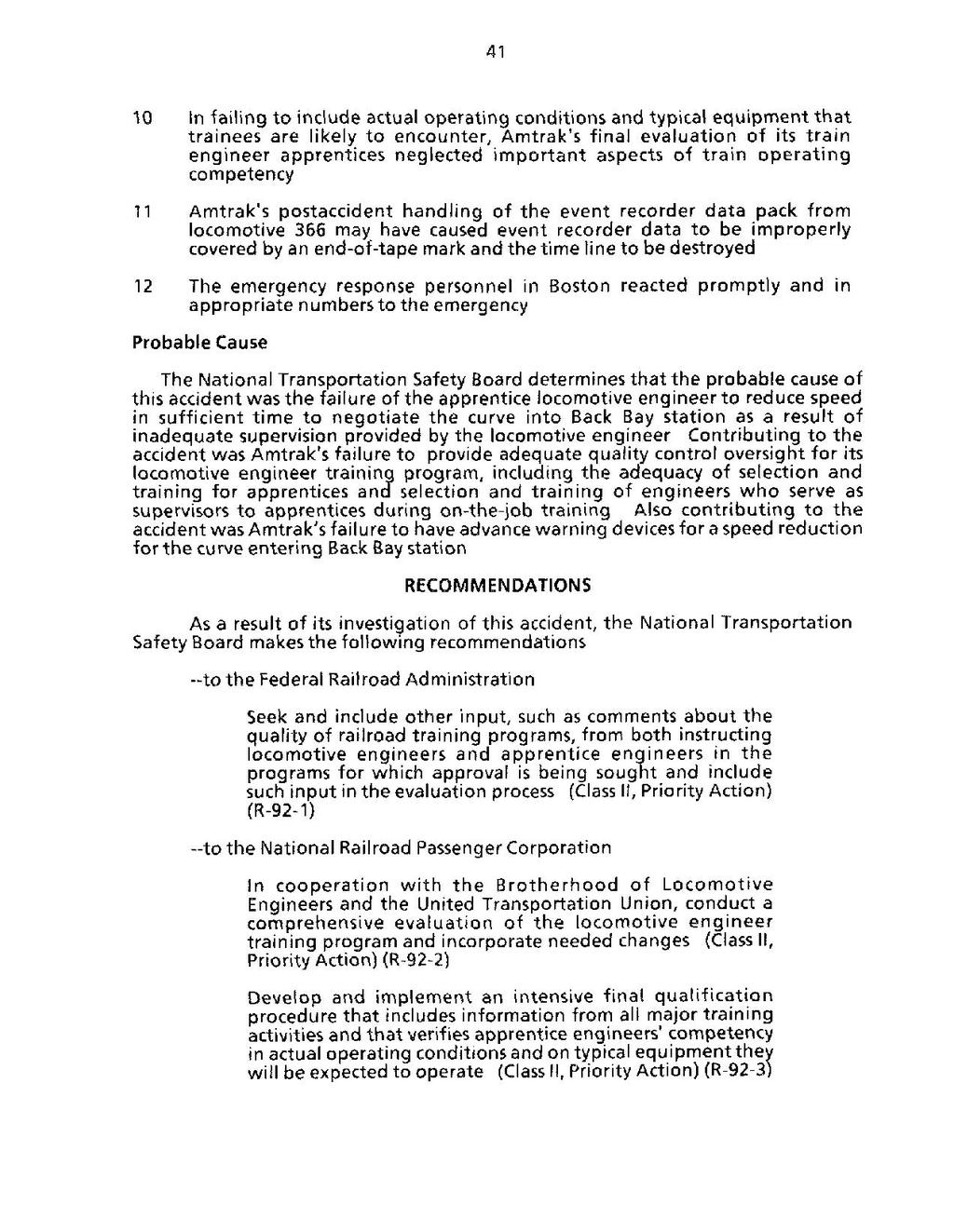41
- In failing to include actual operating conditions and typical equipment that trainees are likely to encounter, Amtrak's final evaluation of its train engineer apprentices neglected important aspects of train operating competency.
- Amtrak's postaccident handling of the event recorder data pack from locomotive 366 may have caused event recorder data to be improperly covered by an end-of-tape mark and the time line to be destroyed.
- The emergency response personnel in Boston reacted promptly and in appropriate numbers to the emergency.
Probable Cause
The National Transportation Safety Board determines that the probable cause of this accident was the failure of the apprentice locomotive engineer to reduce speed in sufficient time to negotiate the curve into Back Bay station as a result of inadequate supervision provided by the locomotive engineer. Contributing to the accident was Amtrak's failure to provide adequate quality control oversight for its locomotive engineer training program, including the adequacy of selection and training for apprentices and selection and training of engineers who serve as supervisors to apprentices during on-the-job training. Also contributing to the accident was Amtrak's failure to have advance warning devices for a speed reduction for the curve entering Back Bay station.
RECOMMENDATIONS
As a result of its investigation of this accident, the National Transportation Safety Board makes the following recommendations.
—to the Federal Railroad Administration
Seek and include other input, such as comments about the quality of railroad training programs, from both instructing locomotive engineers and apprentice engineers in the programs for which approval is being sought and include such input in the evaluation process (Class II, Priority Action) (R-92-1)
—to the National Railroad Passenger Corporation
In cooperation with the Brotherhood of Locomotive Engineers and the United Transportation Union, conduct a comprehensive evaluation of the locomotive engineer training program and incorporate needed changes (Class II, Priority Action) (R-92-2)
Develop and implement an intensive final qualification procedure that includes information from all major training activities and that verifies apprentice engineers' competency in actual operating conditions and on typical equipment they will be expected to operate (Class II, Priority Action) (R-92-3)
